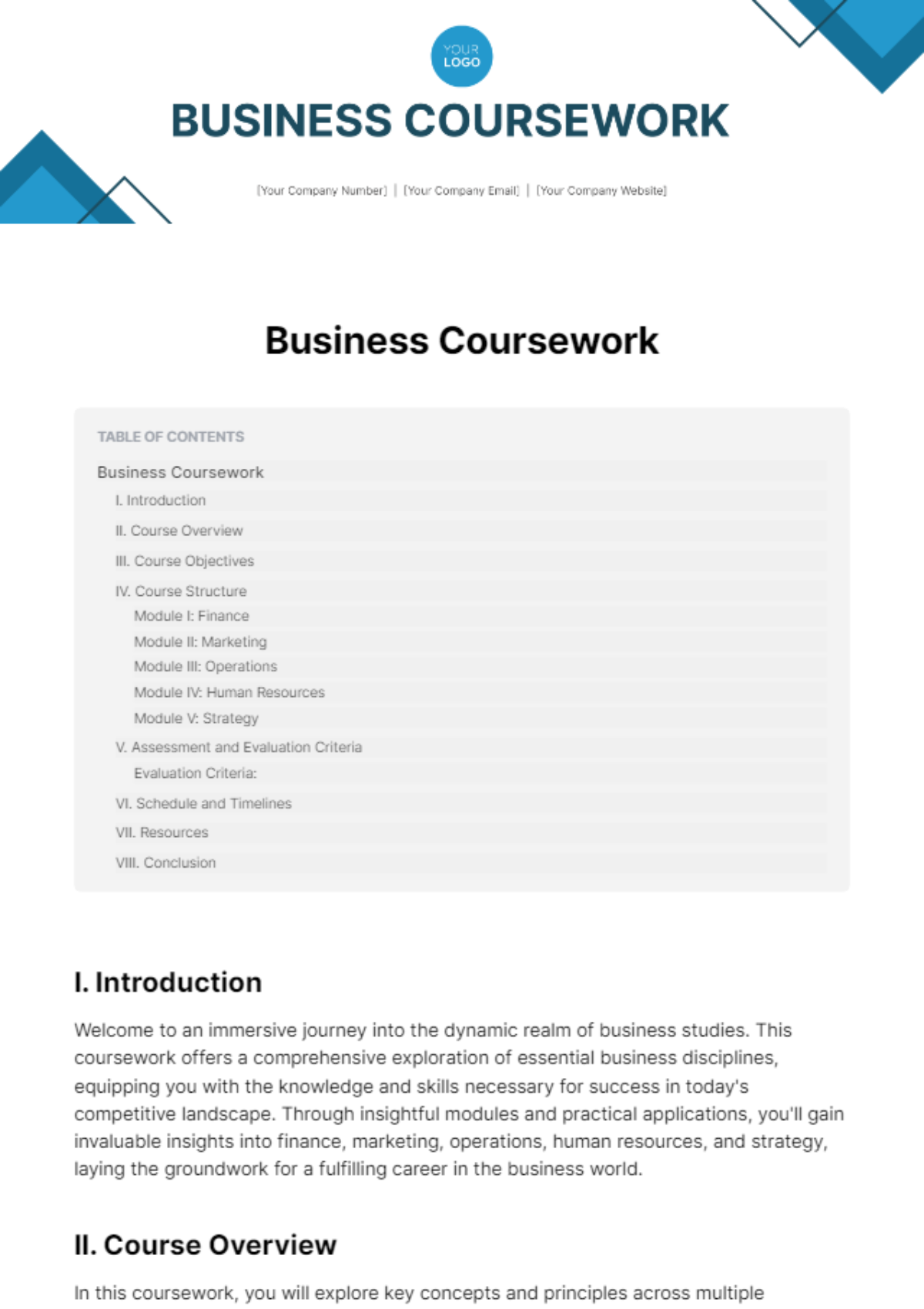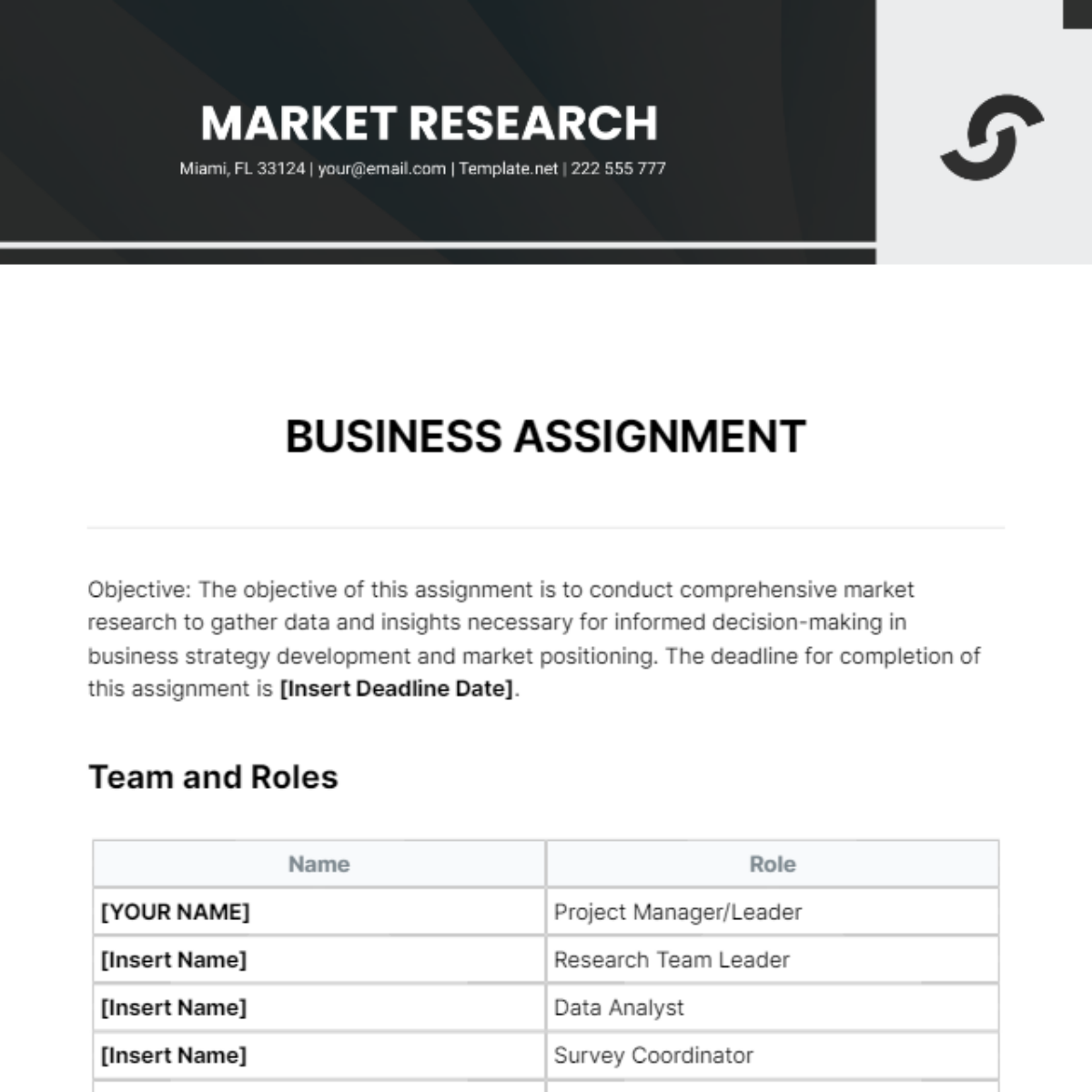Business Chapter
Prepared by : | [Your Name] |
Company : | [Your Company Name] |
Department : | [Your Department] |
I. Introduction
In this section, [Chapter Details/Objectives] will be introduced, providing an overview of what will be covered in the chapter. The introduction serves as a roadmap for readers, outlining key topics and objectives to be addressed.
Key Points
Define the purpose and scope of the chapter.
Provide a brief overview of the topics covered.
Highlight the significance of [Your Company Name]'s approach to [Chapter Details/Objectives].
II. [Chapter Details/Objectives]
This section delves into the specific details and objectives of the chapter, offering a comprehensive breakdown of each component. [Chapter Details/Objectives] are outlined in detail, providing readers with a clear understanding of what to expect.
Objectives
[Objective 1]: Describe the first objective in detail, including its importance and relevance to [Your Company Name]'s goals.
[Objective 2]: Outline the second objective, providing actionable steps and strategies for achieving success.
[Objective 3]: Discuss the third objective, highlighting any challenges or opportunities that may arise.
Key Components
[Component 1]: Detail the first component, including its role within the broader context of [Chapter Details/Objectives].
[Component 2]: Explore the second component, analyzing its impact on [Your Company Name]'s operations.
[Component 3]: Examine the third component, discussing best practices and potential areas for improvement.
III. Methodology
In this section, the methodology employed to achieve [Chapter Details/Objectives] will be outlined. It provides a structured approach for implementing strategies and tactics discussed in the chapter.
Approach
Research: Conduct thorough research to gather relevant data and insights.
Analysis: Analyze findings to identify key trends, challenges, and opportunities.
Strategy: Develop a comprehensive strategy tailored to [Your Company Name]'s specific needs and objectives.
Implementation: Execute the strategy effectively, monitoring progress and making adjustments as needed.
IV. Case Studies
This section presents real-world case studies illustrating the successful implementation of strategies related to [Chapter Details/Objectives]. These case studies offer practical examples and insights that readers can apply to their own business practices.
Case Study 1: [Case Study Name]
Background: Provide background information on the case study.
Challenges: Outline the challenges faced and how they were addressed.
Solutions: Describe the solutions implemented and their impact on [Chapter Details/Objectives].
Results: Highlight the outcomes achieved as a result of the implemented strategies.
Case Study 2: [Case Study Name]
Overview: Offer an overview of the second case study, highlighting its relevance to [Chapter Details/Objectives].
Approach: Detail the approach taken to overcome challenges and achieve objectives.
Lessons Learned: Discuss key lessons learned from the case study and their implications for [Your Company Name].
V. Conclusion
The conclusion summarizes the key takeaways from the chapter and reinforces the importance of [Chapter Details/Objectives]. It also provides recommendations for further reading or action steps to be taken.
Summary
Recap the main points discussed throughout the chapter.
Emphasize the significance of [Chapter Details/Objectives] in driving [Your Company Name]'s success.
Encourage readers to implement the strategies and tactics outlined in the chapter.


















